The game of baseball is a perfect blend of art and science. But sometimes, the rules are stupid, dated, improper, ugly or just plain tacky. Here are 21 rules, guidelines and strategies that must be saved before the game is blown.
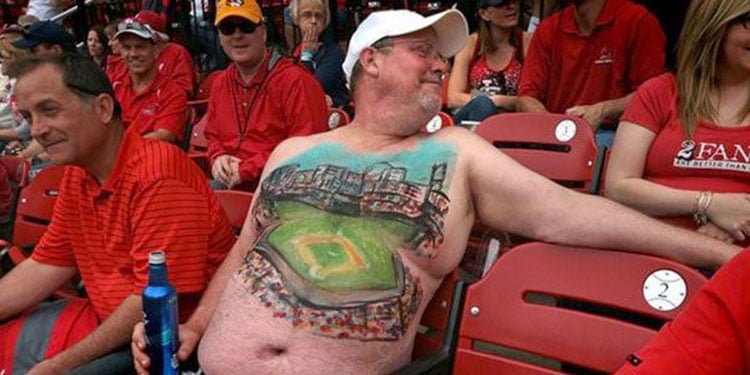
What makes baseball special is that it is a perfect blend of art and science. While rules are rules, they are often merely guidelines. For instance, a strike is only a strike if the catcher frames it properly. Meanwhile, a check swing is only a strike if the umpire believes the batter broke his wrists or the bat broke the plane of the plate. What?? These rules are just opinions. To a novice, these rules can be perceived as dumb.
Simultaneously, those who run baseball are doing everything they can to mess up the game to please those who barely enjoy the sport. Mostly, this is because executives think these changes will speed up the game, make it safer, or provide a better experience. Mostly, this is also dumb.
Yet, there is a lot about baseball that is awesome. It’s the most strategic and suspenseful game on the planet. And everybody knows that hitting a round ball with a round bat square is the hardest thing to do in sports. But I’m going to cover the dumb stuff that needs to be saved before we blow the game.
1. Runners Starting on Second Base in Extra Innings
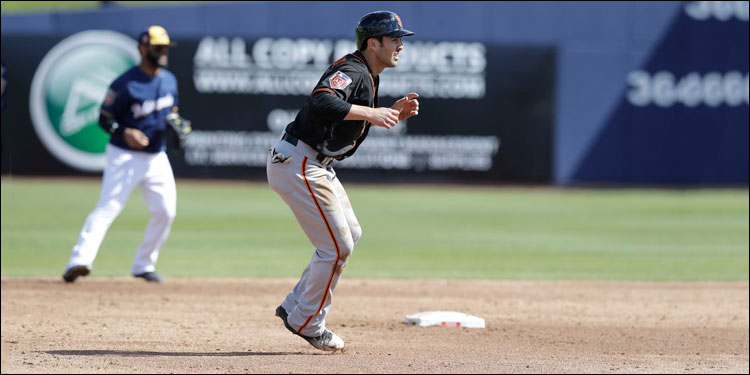
In 2020, in extra inning games, Major League Baseball began those innings by placing a runner on second base. This was claimed to be a strategic effort to make the game more exciting and to speed up the game. So you know how many games we’re talking about, according to Baseball Reference, 8.6% of games went into extra innings in 2019.
To baseball enthusiasts, nothing is better than “bonus baseball” – free innings at the end of a game. MLB trying to deprive fans of these free innings is like a scooper at an ice cream shop withholding the cherry from your sundae. Yet, you’d think if both teams have a scenario where a runner is on second base, then both teams are equally as likely to score – and it would be a wash. But that’s not what happened. From 2019 to 2020, the average game time increased 2.2% from 3:10 to 3:06.
And if it is excitement you seek, from 2019 to 2020, the average number of runs per game actually decreased from 9.66 to 9.29 – a 3.8% decline.
So not only is the game longer (against strategy), the excitement of more runs scored also declined (against strategy). Is all this due to extra inning changes? No. But still. It’s dumb.
Solution: Stop putting a runner on second base to start extra innings.
2. Different Strike Zones for Each Batter

The official strike zone in baseball is “the area over home plate from the midpoint between a batter’s shoulders and the top of the uniform pants – when the batter is in his stance and prepared to swing at a pitched ball – and a point just below the kneecap.”
How the heck is an umpire supposed to comprehend this, for each batter, on the fly, in the time it takes a 90 MPH fastball to reach home plate? They can’t. Not really. It’s judgement.
On top of that, how is it fair that taller players have a bigger strike zone? I’ve heard: “because tall players have more plate coverage.” That is not true. Whether a batter swings a 32 inch bat or a 35 inch bat, both have the same amount of lumber that crosses the plate. A taller player’s bat fills a smaller percentage of the strike zone. It’s just basic math.
FanGraph did a nice little chart and analysis comparing tall vs. short batters with a strike zone for a 5’8″ batter versus a 6’4″ batter. Judge for yourself. Do taller basketball players have to shoot at a higher hoop? Of course not. That would be dumb.
Solution: It’s a dumb having different rules for different people, but I like it because I’m not tall. Keep it.
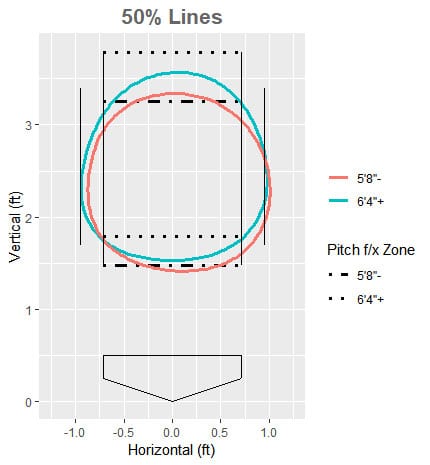
3. Not Having to Pitch During Intentional Walks

An intentional walk occurs when the team in the field opts to walk a batter on purpose to either create a force out situation or because the batter is a threatening force. Either way, it places the batter on first base instead of letting him hit.
This strategy is most likely to occur in a clutch moment, typically with runners in scoring position. Thus, the four intentional balls the pitcher is forced to throw are filled with emotion. The fans get more pumped with each pitch, and the pitcher is forced to concentrate and not through the ball away. And sometimes the batter even tries to hit one of the pitches! It is a moment of tension, and sets up the next batter – where there will now be even more runners on base. Let’s g––– not so fast!
Major League Baseball eliminated intentional walk pitches, electing to just have the batter just mosey on over to first base instead. No more tension. No more excitement. No more risk. Why? To save a little time and speed up the game.
How much time was saved by eliminating pitches during an intentional walk? According to Beyond the Box Score, from 2016 (before the rule) to 2017 (first year with the rule) a total of 39 seconds were saved per intentional walk by not having to make four extra pitches. And the cost? All the anticipation and excitement leading up to likely one of the most intense at bats of the game has been sucked away for 39 seconds – about the time it takes to microwave a cup of coffee. Dumb.
Solution: Require pitchers to throw 4 pitches for a walk.
4. Removing Pitchers Based on Arbitrary Pitch Counts
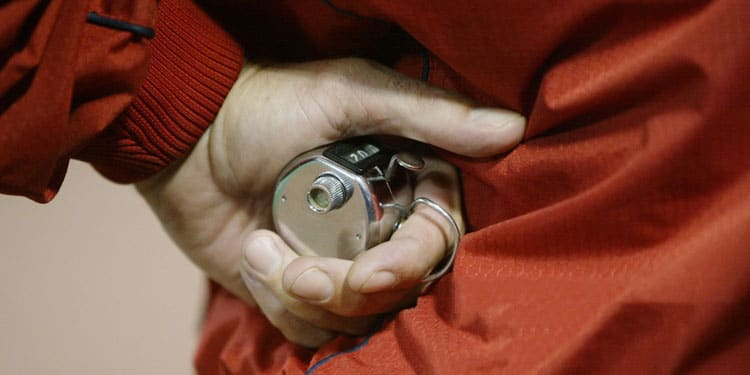
I get it. You gotta watch out for a kid’s arms to prevent injuries. According to the Pitch Smart Compliance Program, it is important to set workload limits for pitchers to limit the likelihood of injury or pitching with fatigue. These guidelines cover all ages, and suggest that kids aged 9-10 never throw more than 66 pitches, while young adults aged 19-22 never throw more than 106 pitches.
Forget for a moment that Nolan Ryan once threw 235 pitches in a game. I’m not suggesting pitchers should stay in forever. But today, as a pitcher approaches 100 pitches, managers go to the bullpen whether or not the pitcher appears tired. Why? Because 100 is a nice round number and seems a good time to make a change. And it eliminates the likelihood that the manager is blamed if the pitcher gets hit or hurt after pitch 100.
Yet, many managers are going crazy removing pitchers based on arbitrary pitch counts, and at times, that destroy the fan experience and the team’s chance to win. On April 3, 2021, Minnesota Twins pitcher José Berríos was pulled after six no-hit innings against the Milwaukee Brewers despite throwing just 84 pitches. He was 27 years old, and 22 pitches away from the pitch limit suggested by the Pitch Smart Compliance program.
Solution: Train managers to better understand pitching mechanics so decisions can be made based on the individual and their performance instead of arbitrary pitch counts.
5. Pitch Clocks
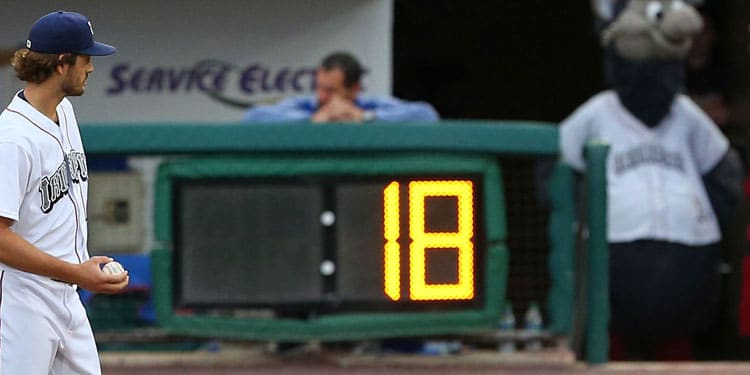
Baseball is beautiful because it isn’t timed – the only major sport that can make that claim. Yet, for real fans, there is intensity with every pitch. If you don’t believe me, go play in the field for a game. You are on your toes every pitch.
When Minor League Baseball first tested this rule in 2015, pitchers were given twenty seconds to throw the pitch, with the punishment of a ball awarded to the batter if not followed. According to MiLB, this actually contributed to a 12-minute reduction in game times.
However, the last thing any player needs (or wants) is the added stress of how long they have until the next pitch is thrown. And the rule will just cause debate, with managers arguing when the clock should start, and when time is actually up.
Solution: Instead of focusing on the pitcher’s timing, require that the pitcher doesn’t leave the mound area once they receive the ball back, and that the batter must remain with a foot in the batter’s box at all times. I’d be willing to bet this would net a similar result without instituting a time constraint.
6. Running to First Baseball on a Dropped Third Stike

When the batter strikes out and the catcher does not catch the pitch before it hits the ground, the batter can run to first base (as long as first base is open, or there are less than two outs).
According to The Rules of Baseball: An Anecdotal Look at the Rules of Baseball and How They Came to Be, this rule was first introduced in 1858. It allowed a batter to run on a missed third strike. Until 1880, though, a batter was considered out if the catcher snagged his third strike either on the fly or the first bounce. The reason for the early rule was the lack of catching gear. Beginning in 1880, catchers moved up to catch the third strike. By 1902, the rules mandated that catchers play within 10 feet of home plate at all times.
This rule literally makes no sense today. Catchers have full catcher’s gear and don’t catch balls on bounces. Admittedly, if a catcher doesn’t need to catch the ball, why have a catcher at all? I could see teams putting the catcher in the outfield instead for defensive advantage, just as infielders are moved for the shift. Plus, holding onto the ball looks cleaner when recording an out.
Solution: Screw it. It’s part of the game’s history. Keep it.
7. Fake Crowd Noise When Fans Are In the Stands
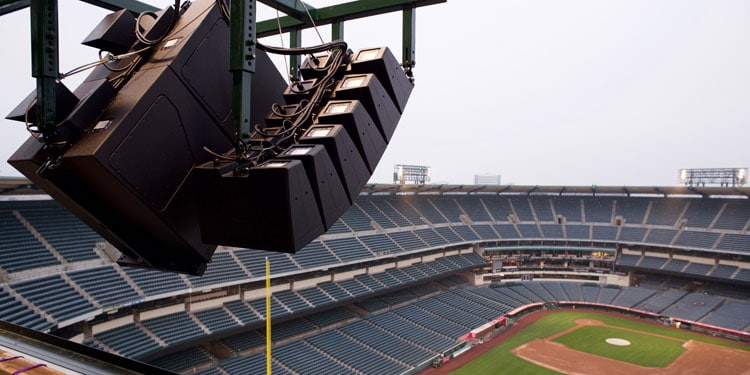
While the game sounds more intense when it sounds like the stadium is packed, there are two fundamental flaws with pumping artificial crowd noise into the stands.
First, there is a disconnect. When you are watching a game with an empty stadium, but hearing lots of crowd noise, it seems fake. This draws attention away from the game. Second, it is not authentic. The technology is getting close, but isn’t there yet. The cheers and boos just don’t sync up well enough or with the right appropriateness.
There is a certain charm in attending a less crowded game and being able to hear the players cheering on each other, the umpire calling balls and strikes, and the person in the seat next to you trying to hold a conversation. All of this is impossible with huge overhead speakers blaring noise into the stadium. Even when this is done only for the benefit of television viewers, the same problems persist.
Fake crowd noise is akin to lip synching at a rock concert, or getting breast implants. Fans just want the real thing.
Solution: Eliminate fake crowd noise as long as there are fans. It’s cheating.
8. Cardboard Fans When You Have Human Fans
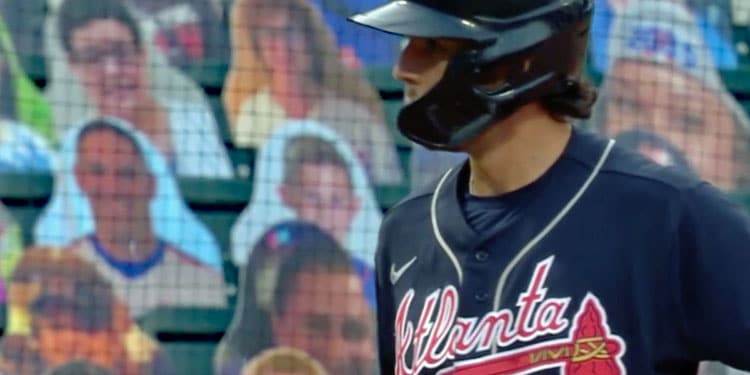
During the pandemic season without real baseball fans in attendance, I wrote about some die-hards who found a way to get into the stadium with the best seats in the house – as cardboard clones. The article was called A Baseball Season Without Fans? Cut It Out, and it made sense at the time.
Then, this was almost a novel concept. In other countries, teams have used mannequins or cardboard cutouts at poorly attended games for years. But the widespread use in MLB was fully pandemic-driven.
While things are improving in the world, stadiums like Fenway Park remain at 12% capacity in 2021, and the place looks barren. Still, people are tied of the masks, tired of social distancing, and tired of the whole thing. Fans don’t need the constant reminder of why the seats are empty.
Solution: Cut the cardboard cutouts out. These cardboard creations are passé. It’s time to go. They’re dumb now.
9. Blacked Out Games in Local Markets
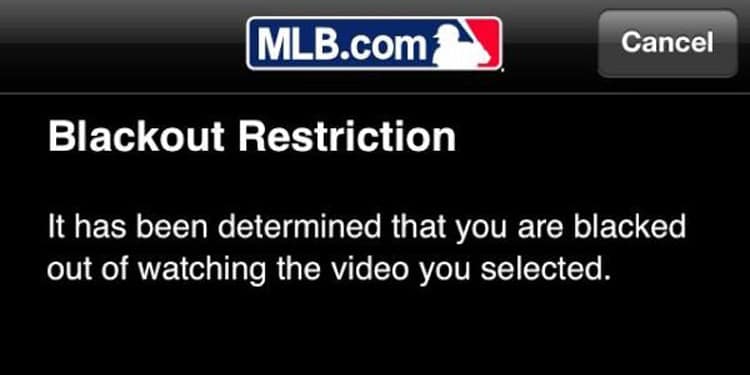
Major League Baseball blacks out games for two primary reasons.
First, to give local broadcasters priority to televise games of the team in their home market over national broadcasters. And second, to give national networks an opportunity to get full value for media rights they paid for.
The messages fans receive can be quite confusing:
MLB.TV subscribers who are not able to authenticate with a participating cable or video service provider, as determined by the applicable provider, will be blacked out from live streaming of these nationally broadcast games or events.
or…
Due to MLB exclusivities, live games occurring each Saturday with a scheduled start time after 1:10 PM EST or before 7:05 PM EST and each Sunday with a scheduled start time after 5:00 PM EST will be blacked out in the United States.
In the technology age, fans watch games in many ways. Perhaps they watch baseball remotely on a mobile phone or tablet. Maybe viewers use their computer screen as a television while in the comfort of their own home.
Blackouts stop fans from watching the game they want, how they want. And when fans can’t watch a baseball game, they watch something else. MLB is training fans to NOT watch baseball. And worse, the only fans trying to watch games in these alternative ways are likely those who would be the most loyal!
Solution: Eliminate blackouts. While this may remove exclusivity for media partners, it allows fans to watch more games, more easily. If MLB wants to market their own game better, they need to cut out measures that restrict access.
10. Instant Replay

As I wrote in Instant Replay: The End of Baseball as You Know It, it’s not about whether a batter is out, but whether they appear out. It’s a beauty contest. Instant Replay may make calls more accurate, but at the cost of eliminating the art of the game, and by drastically delaying the game.
Some of the “art of baseball” calls that have already been eliminated because of instant replay include the neighborhood play at second base, tag-ups on fly balls, pickoff moves, and stolen base calls. In the future, this could extend to catcher’s framing pitches and check swings. There is no end in sight.
But worse, it is these close plays that generate the most excitement. Now, when there is a close play, you need to hold that excitement for several minutes while the local umpire crew consults with officials in New York who are not even at the game.
Only one week into the 2021 season, and replay is causing havoc at Boston Red Sox games.
On Opening Day, Kike Hernandez smacked the first Red Sox hit of the season – and was immediately picked off, but initially called safe. It took crew chief Joe West 2 minutes and 32 seconds of watching replays to reverse the original safe call.
The following week, Red Sox batter JD Martinez hit a foul ball toward the right field foul pole that appeared to be caught by Rays right fielder Randy Arozarena. However, umpire Jeremie Rahak received video evidence suggesting a a fan had touched the ball first. After a lengthy replay delay, the Rays, who had already left the playing field, would have to get back onto the field to replay the pitch. I would know. I was there!
Solution: Eliminate instant replay. It delays the game, and eliminates umpire variability which is a substantial artistic component of the art of the game.
11. Using Baseball Gloves to Cover Your Mouth When You’re Talking
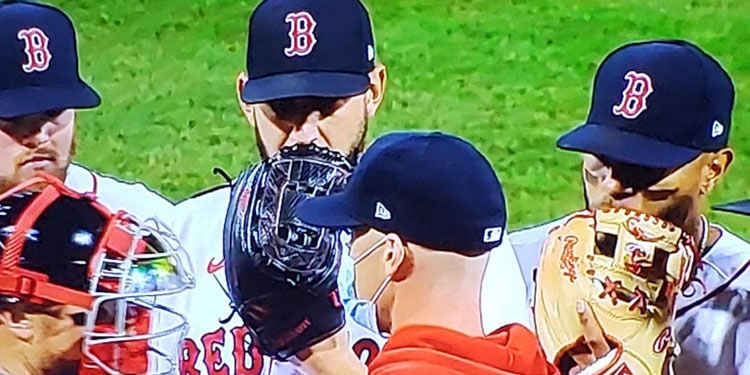
Players cover their mouths with their glove when talking to one another because they don’t want opposing players, directional microphones, and television cameras to hear their words and read their lips.
In the Houston Astros trashcan banging era, I can see how this might be a concern. Still, knock it off, guys. When your huddle breaks in two seconds, everybody will know you were talking about playing the shift because they will see you in the shift. They will know the pitcher has one more batter because they will see the pitcher throwing to another batter. Sure, maybe they are discussing strategy on pitching with a 2-0 count. But really, how exactly would that information be relayed to the batter in a usable way? It can’t be.
Solution: Just stop putting the glove in front of your face. Nobody is reading your lips. Probably.
12. Bunting
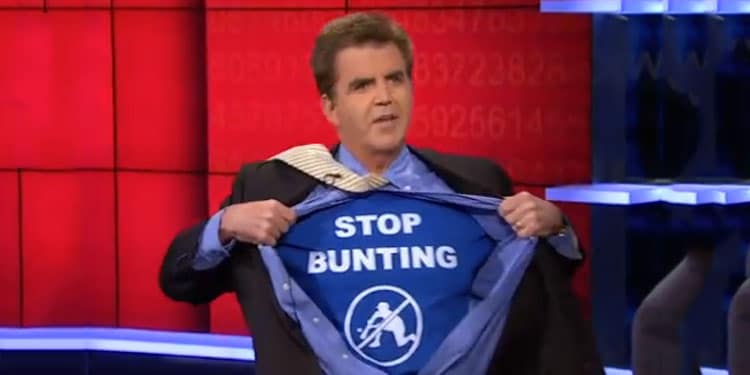
I’m going to blow your mind. You are 30.5% more likely to score a run if you do NOT bunt a runner from first base to second base. This is not a matter of debate or your baseball opinion as a seasoned manager.
Retrosheet conducted a study. From 1993-2010, if a team had a runner on first base with no outs, on average that team would score .941 runs from that point until the end of the inning. After a successful bunt, the runner has advanced a base and now there is one out. The study further showed that if a team had a runner on second base with one out, the average was .721 runs from that point forward. In other words, after a successful bunt, your team is worse off. If you don’t believe me, trust Brian Kenny from MLB Now: Stop Bunting.
And this is at the major league level. In college, high school, or amateur levels where batters are not as good at bunting as major leaguers, this disparity will be much larger.
Solution: Stop bunting. Hit a dinger.
13. Robo Umps

There are so many reasons robo umps are dumb. But mostly, it is because they eliminate the most essential component of baseball – the batter vs. pitcher interaction.
With a robo ump system, a batter’s strike zone varies from hitter to hitter and is adjusted manually for each hitter before each series. While the strike zone is defined based on the batter’s stance, a robo ump uses a player’s height.
A pitcher is now penalized for having crafty pitches. For instance, a nasty curveball can and should deceive the batter and umpire. But it won’t deceive the robo ump.
And of course, a catcher serves little purpose any longer. Pitch framing is rendered useless with an automated strike zone since the radar evaluates the pitch at the front of the plate. It should not matter if a pitch is a strike, but whether the umpire believes it is. As it stands already, many catchers don’t even call their own pitches – they are signaled in by a coach. And catchers can no longer block the plate due to safety issues. So why even have a catcher at all? This position is being killed.
Yes, it is true that umpires occasionally blow easy calls. But over the course of a season, it balances out. Eliminating the art of the game at home plate is dumb.
Solution: Use robo ump technology like TrackMan that is being used in the Atlantic League to track an umpire’s accuracy. Show each umpire’s pitch-calling percentage on screen – just like how a player’s batting average is displayed. Then, you can evaluate umpires based on their performance, use the data to learn and improve, and send underperforming umpires to the minors, just like you do for rostered players who underperform.
14. Extra Wide Bases
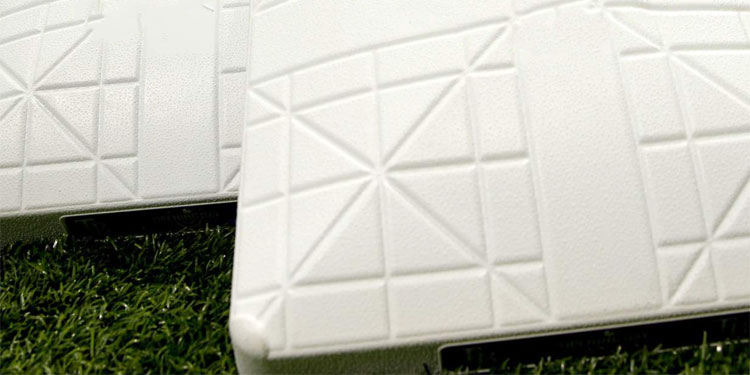
The size of first, second and third base have all been expanded from 15 square inches to 18 square inches in Triple A baseball to reduce injuries and collisions.
It is true that when a runner jets full speed down the first base line, there isn’t always a lot of room for the runner to touch the base with the first baseman’s foot in the way. While there typically isn’t a collision, occasionally a foot or an ankle can get stepped on.
However, 3-inch larger bases will result in more infield hits and stolen bases, because runners will be 6-inches closer to the next base. While that may equate to only a 0.56% difference, think about all the times a runner is safe or out by an inch or two on a bang-bang play. Those plays will now be all be safe advances. The science of baseball has bases perfectly spread. Changing this distance puts the entire science of the game out of whack.
Plus, more players may even hurt their ankles stepping onto second base incorrectly because the base isn’t where their pacing taught them it should be for their entire lives!
Solution: If you’re concerned with first base collisions, expand first base only, by one foot (the size of a foot), into foul territory. This way, the distance between the bases is kept true. Leave second and third base alone. Boys have been trying to get to those bases their whole lives. Let them continue to aspire.
15. Fields Where You Aren’t Allowed to Spit or Drink Gatorade

No grounds crew wants to pick up seeds off a turf field. And Gatorade sure is sticky if spilled all over the dugout. But these rules are getting us one step away from declaring: “No baseballs allowed on the playing field.”
Seeds and sports drinks are a part of the game. If the grounds crew isn’t prepared to allow kids to make a mess on the field, they need a new profession.
Do accountants say: “Stop with the numbers. Too many figures. No more math!”?? Of course not. Grounds crews can’t just do away with seeds and drink because it creates work for them. Get with the program. Do your job, guys.
It should also be noted that at Victory Field in Watertown, Massachusetts where the Red Raiders play, athletes aren’t allowed to have javelins either. So there’s that. Dumb.
Solution: Let the kids drink and spit. Let kids be kids!
16. Having to Pay $45 for Parking while Sitting in $40 Seats
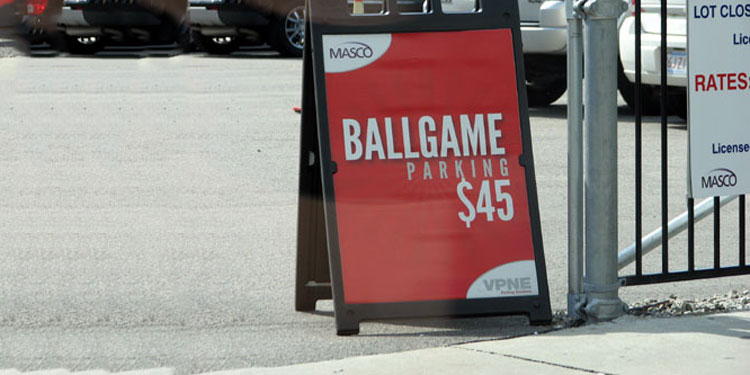
How can it possibly be more expensive to park your car in a parking space than to plant your butt in a stadium seat where you can actually watch the game?
Parking lots don’t pay media rights or pay player salaries. They shouldn’t be more expensive.
Until teams solve this problem, some fans won’t attend the game. Want proof? My buddy Scott from Framingham texted me a few weeks ago: “I don’t want to spend that much. Once you add parking, beers and a meal, it’s $200. Thanks though.”
See? Statistical proof!
Sure, fans can take public transportation or an Uber. But some people just want or need to drive in.
Solution: Teams could validate parking and build this expense into their pricing model.
17. The Infield Fly Rule

An infield fly is a fair fly ball that, in the judgment of the umpire, can be caught by an infielder, pitcher, or catcher with ordinary effort and when there are runners on first and second or first, second, and third and less than two outs.
It makes no sense that easy double-plays on the ground are OK, but easy double-plays in the air are basically illegal.
When a batter hits a pop fly to the infield with multiple runners on base, if the infielder is skilled enough to intentionally drop the ball and spin it for two outs, let them. The extra out will also speed up the game. If batters don’t like this, they should stop hitting weak infield pop-ups. But regardless, some whiny weak pop-up hitter likely complained back in 1895 and the rule was added.
Fun fact #1: A bunt can never be an infield fly, no matter how high it pops up. So until they change the infield-fly rule, turn bunt pop-ups into double plays all day long!
Fun fact #2: A line drive can also never be an infield fly, but according to Rule 5.09(a)(12), “the batter is out, the ball is dead, and runner(s) return to their original base(s) when an infielder intentionally drops a fair fly ball or line drive.” So no loophole here to turn easy double plays.
Solution: Eliminate the infield-fly rule.
18. Paper Ticket Elimination
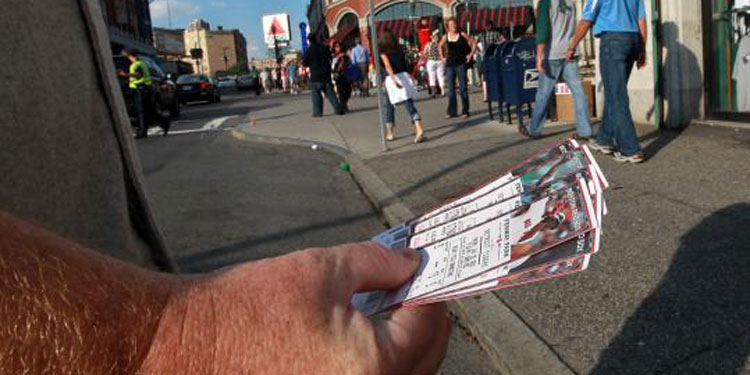
The Ballpark mobile app from MLB makes it easy store all your tickets electronically. Plus, you can transfer tickets to other people – whether you are attending with them, or need to sell the tickets to them. But there are a handful of problems with getting rid of paper tickets entirely.
Paper tickets are collectables. They make great keepsakes, and years from now, people can look at a ticket stub and recall the game. This novelty aspect is gone without paper tickets. Plus, the paper tickets have marketing value, as they reinforce the purchase. You can hold them in your hands.
Electronic tickets actually make it tougher to get a ticket. Do you think scalpers are going to use their personal Ballpark app account to sell overpriced tickets? Think that might raise some flags and risk them getting busted? Without scalping, of the game tickets sold, much fewer will be resold on eBay, Craig’s List, or on Lansdowne Street. This is going to lead to more empty seats for tickets that the original purchaser can’t use.
Solution: Allow fans the option to purchase paper tickets, at their expense.
19. Not Allowing Fans to Sit in Empty Seats

It is in MLB’s best interest to have the ballpark appear packed. It increases television viewership, and ad revenue. Meanwhile, it is a great fan experience to move into seats behind home plate when they are available (like my son and I did in the above picture).
For reasons I can’t fathom, in recent years, certain “Ballpark Security” is employed with the sole purpose of assuring that spectators only sit in their ticketed seats. Not just behind home plate, but anywhere. Dumb.
Why not allow fans a better experience by moving up a few rows in late innings, or sit behind first base if the season-ticket holder doesn’t show for the game? There is no reason to not allow this. Plus, it makes the stadium appear more packed. And bonus plus, fans who get better seats will feel as if they are getting more value for their money.
Solution: After the 3rd inning, let fans sit where they want. What’s the big deal. If the original ticket holder eventually arrives, they can have their seat back.
20. Removing Native Americans from America’s Pastime

Indigenous people lived on what is now called “American soil” long before Columbus thought he landed in India and called them Indians. Over the decades, highly respected Indians had sports teams named after them in tribute, such as Warriors, Braves, and Chiefs.
Today, legislators are pivoting from Native American monikers, mascots and logos to alternatives that strip these people’s history from our culture. Take this example from Wakefield, Massachusetts.
In 1947, Leonard Bayrd, a prominent Native American, named the Wakefield Warriors and the Saugus Sachems. His friend, Jack Galvin, designed the logos under his supervision. Yet in 2020, the Wakefield School Committee voted to remove the “Warrior” name and logo from the town.
MLB is taking the same stance with the Cleveland Indians, even though the potentially offensive Chief Wahoo logo was removed from use beginning with the 2019 season.
Before it was called “America,” Native Americans used to call the land here “Turtle Island.” Perhaps change the Indians team name to the Cleveland Turtles. But just eliminating a team name for political correctness is absurd. And removing non-offensive Indian chiefs in headdress nationwide from artwork is akin to killing them off in the first place. It’s wiping out history.
Solution: Let indigenous people get the respect they deserve in America, and use names and logos to honor them, as appropriate.
21. Banana Yellow Uniforms for the Boston Red Sox

The 2021 Boston Red Sox will sport “City Connect” jerseys on Patriot’s Day. Designed in collaboration with Nike, these banana-colored jerseys reflect the traditional colors of the marathon, which is traditionally held on Patriots’ Day.
The jerseys are intended to pay tribute to the unique bond between the club and the City of Boston and the Boston Marathon. It has also been suggested that the jerseys will pay tribute to those injured and killed in the 2013 marathon bombing. This year’s marathon was pushed to October after being cancelled in 2020 due to the COVID-19 pandemic.
There is no disputing that representing the city and honoring our fallen people is noble. But there are ways to do this without absolutely killing the Red Sox red, navy blue and white brand and dressing the players as Chiquita bananas.
Branding is crucial because it allows customers to know what to expect from a product. It is a way of distinguishing one brand from a competitor’s while consistently clarifying the offer. These yellow monstrosities do none of this.
What was intended as a respectful tribute breaks every marketing rule in the book. If the intent was to give a nod to the marathon, perhaps put finish line tape between home plate and first base during the first inning, and have each runner heading to first base rip through it. Then, give the Sox players marathon patches for their jerseys with an alternatively branded cap.
But this jersey… Wow. Just, dumb.
Solution: Moving forward, stay on brand with team colors. Full disclosure: I bought one of the yellow jerseys.
You Don’t Always Need to Be Safe if You Can Be Clever!
Instead of identifying problems with baseball that may not even exist and eliminating them, find clever solutions to make the game better.
Shorter isn’t always sweeter. Brighter isn’t always better. And the grass isn’t always greener – unless you’re playing at Fenway Park.
Find ways to improve the game of baseball. They exist. You just need to think a little bit out of the base lines. And stop being so dumb.
Brett Rudy is a trailblazer in the world of baseball. As the founder of Baseball Is My Life and co-founder of Charity Hop Sports Marketing, he’s dedicated to elevating the sport and supporting the athletes who play it. With a passion for making a difference, Brett has created successful philanthropic initiatives like Charity Wines and 100 Innings of Baseball for ALS. He’s also the mastermind behind the Corked Bat Collection, Cooperstown Classic at the Baseball Hall of Fame, and Winterball for Toys for Tots. When he’s not working to improve the game, Brett can be found playing outfield in the Boston Metro Baseball League, living and breathing the sport he loves.